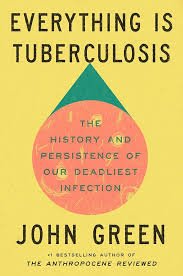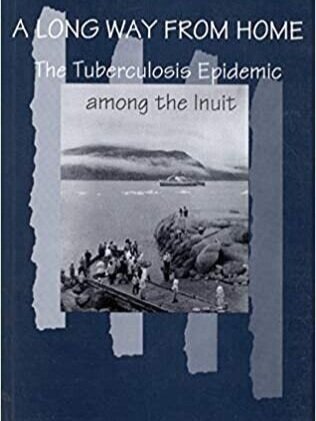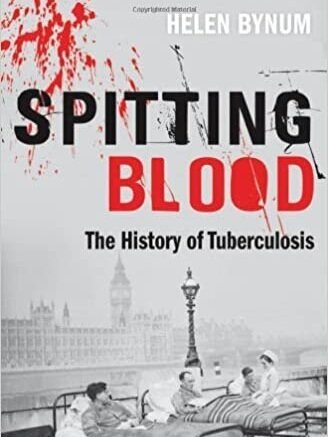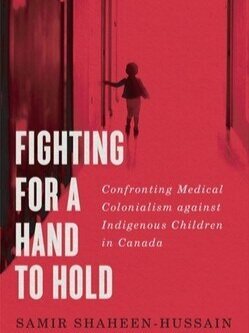-
In Phantom Plague, Vidya Krishnan, traces the history of tuberculosis from the slums of 19th-century New York to modern Mumbai. In a narrative spanning century, Krishnan shows how superstition and folk-remedies, made way for scientific understanding of TB, such that it was controlled and cured in the West.
Check out this book review written by Stop TB Canada steering committee member, Lena Faust.
-
Spanning the Great Depression and moving through World War II and beyond, this remarkable true story follows the intrepid young women known by their patients as the “Black Angels.”
For twenty years, they risked their lives working under appalling conditions while caring for New York’s poorest residents, who languished in wards, waiting to die, or became guinea pigs for experimental surgeries and often deadly drugs.
But despite their major role in desegregating the New York City hospital system—and their vital work in helping to find the cure for tuberculosis at Sea View—these nurses were completely erased from history.
The Black Angels recovers the voices of these extraordinary women and puts them at the center of this riveting story, celebrating their legacy and spirit of survival.
-
John Green's latest book, "Everything is Tuberculosis: The History and Persistence of Our Deadliest Infection," was released on March 18, 2025. The book explores the global impact of the world's deadliest infectious disease, Tuberculosis (TB), examines its historical significance, and intertwines it with personal narratives.
In 2019, Green met a young TB patient, Henry, in a hospital in Sierra Leone. Through Henry's story, the book offers readers a glimpse into the personal toll of TB. Green has emerged as an avid advocate for reducing healthcare inquiries and improving access to TB treatment and care. The ongoing influence of TB worldwide is a central theme in the book, culminating in the assertion: "Ultimately, we are the cause. We can also be the cure."
-
Based on recollections of patients, interviews with participants in the government programs, available literature and statistics, and records of the Northern Affairs Program, Pat Sandiford Grygier examines the programs for the Inuit in all parts of Canada.
She also explores the history of tuberculosis in Canada, conditions of life in the North for both Inuit and non-Natives, and the development and modification of government administration of the North.
This important study will be of interest to those in Native and northern studies, Canadian social and political history, and the history of medicine in Canada.
-
Tuberculosis is characterized as a social disease and few have been more inextricably linked with human history. Helen Bynum explores the history and development of TB throughout the world, touching on the various discoveries that have emerged about the disease over time. Bynum also examines the place TB holds in the popular imagination and its role in various forms of the dramatic arts.
The story of TB since the 1950s is complex, and Bynum describes the picture emerging from the WHO of the difficulties that attended the management of the disease in the developing world. In the meantime, TB has emerged again in the West, both among the urban underclass and in association with a new infection - HIV. The disease has returned with a vengeance - in drug-resistant form. The story of TB is far from over.
-
A Mongolian Girl’s Journey from Stigma & Illness to Empowerment teaches that our struggles are our stories, and that accepting every part of who we are - even the parts we hide - is essential to growth. Handaa Enkh-Amgalan offers readers the tools to reflect on and articulate their previous experiences, while empowering them to rediscover who they are an find hope.
She intertwines her journey battling advanced-stage tuberculosis and the associated, pervasive social prejudice with stories of growing up in the nomadic country of Mongolia and pursuing education abroad. In her debut book, Enkh-Amgalan deftly and earnestly combines storytelling with advocacy, drawing parallels to other stigmatized populations and embracing survivor identity.
Check out this blog post written by Stop TB Canada steering committee member, Lena Faust.
-
Poor quality of TB care is a major issue in all subgroups (adults, children), in all forms of TB (childhood, latent and DR-TB), and in a variety of countries and settings. Given the Covid-19 pandemic and its negative impact on TB services, the topic of quality of TB care has become even more pertinent. This book, with 21 published papers, points out key gaps in care quality, and outlines several potential solutions.
-
Fighting for A Hand to Hold exposes the Canadian medical establishment’s role in the displacement, colonization, and genocide of Indigenous Peoples — colonial genocide. Through meticulously gathered government documentation, historical scholarship, media reports, public inquiries, and personal testimonies, Samir Shaheen-Hussain connects the draconian medevac practice with often-disregarded crimes committed against and medical violence inflicted upon Indigenous children across the country for more than a century and a half: fomented smallpox epidemics and avoidable tuberculosis deaths; experiments and abuse in residential schools, Indian Hospitals, reserves, and communities; forced sterilization; child abduction and disappearances.
-
Catching Breath follows the history of TB through the ages, from its time as an infection of hunter-gatherers to the first human villages, which set it up with everything it needed to become the monstrous disease it is today, through to the perils of industrialization and urbanization.
It goes on to look at the latest research in fighting the disease, with stories of modern scientific research, interviews with doctors on the TB frontline, and the personal experiences of those affected by the disease.








